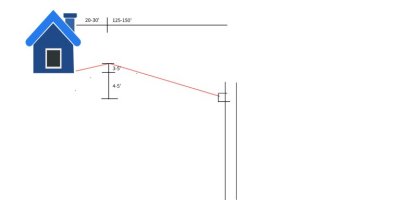Morning all. First post here, long time reader. Thank you all for all the help and information you have already provided me.
I live up in the mountains of CO at 11000 ft and unfortunately came back from a trip to find my cistern not filling.
I have a submersible pump at 365' depth, filling a 400 gallon cistern in the basement.
The pitless adapter is probably 6-7' deep, and the underground line is approximately 175-200 ft of 1/2" copper.
I had a well tech install a "drain back" in the system this summer, as the cistern is top fed and the line that fills it allows air in. When it was installed this summer he turned on the pump, and then turned it off and confirmed he heard it "sucking" the water back towards the well.
But apparently it is not pulling all of the water out of the system as there is water freezing somewhere between the house and the pitless.
I had a welder come out Monday and we thawed the lines out, cistern filled up and wasn't calling for anymore water, and the line was frozen again by Wednesday.
Was wondering if anyone had any suggestions or solutions that had worked for them? Maybe the drainback needs to be installed deeper (Im guessing some of the copper line runs up hill from the house to the well which is causing that water to get stuck in the line and freeze)? Is there not enough air in the cistern when full to allow it to siphon the water back into the well?
Thanks again!
I live up in the mountains of CO at 11000 ft and unfortunately came back from a trip to find my cistern not filling.
I have a submersible pump at 365' depth, filling a 400 gallon cistern in the basement.
The pitless adapter is probably 6-7' deep, and the underground line is approximately 175-200 ft of 1/2" copper.
I had a well tech install a "drain back" in the system this summer, as the cistern is top fed and the line that fills it allows air in. When it was installed this summer he turned on the pump, and then turned it off and confirmed he heard it "sucking" the water back towards the well.
But apparently it is not pulling all of the water out of the system as there is water freezing somewhere between the house and the pitless.
I had a welder come out Monday and we thawed the lines out, cistern filled up and wasn't calling for anymore water, and the line was frozen again by Wednesday.
Was wondering if anyone had any suggestions or solutions that had worked for them? Maybe the drainback needs to be installed deeper (Im guessing some of the copper line runs up hill from the house to the well which is causing that water to get stuck in the line and freeze)? Is there not enough air in the cistern when full to allow it to siphon the water back into the well?
Thanks again!


